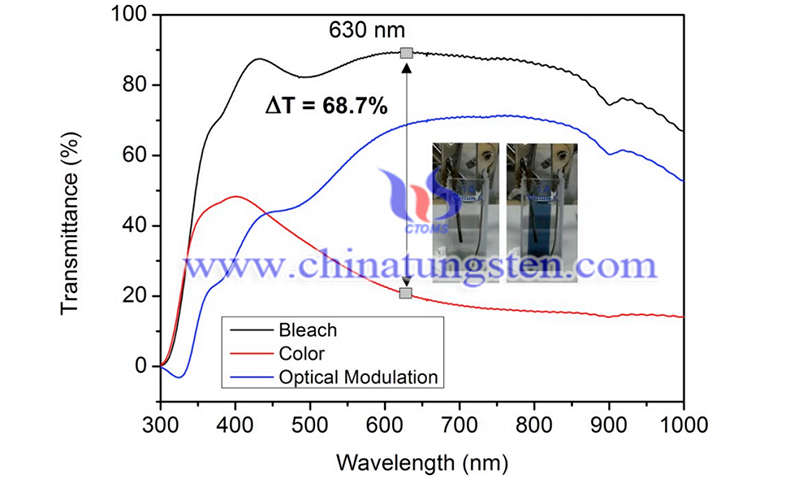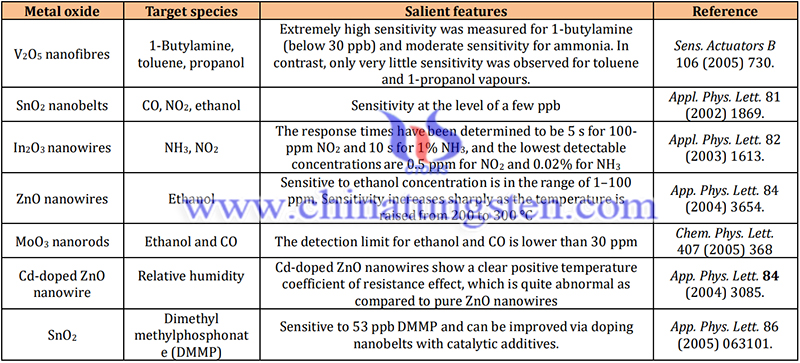Preparation of Tungsten Oxide Film Using Techniques Such As Sol-Gel
- Details
- Category: Tungsten's News
- Published on Friday, 16 December 2022 19:48
The preparation of tungsten oxide film includes sol-gel technique from ethanol acetylated tungsten peroxide sols containing varying amounts of organic matter, namely oxalic acid dehydrate (OAD). The chemical properties of the precursor solution were changed by varying the proportion of dopants, allowing the microstructure of the films to be altered, which are otherwise amorphous to X-rays.
The fast coloration-bleaching kinetics, good coloration efficiency and anion storage capacity make them suitable for smart window applications. Qingjun Sun et al. synthesized monodisperse WO3-2H2O nanospheres by microwave hydrothermal method with L (+) tartaric acid as a protective agent, which is in good agreement with the standard JCPDS data for WO3-2H2O.

(Credit: Dilek Evecan and Esra Zayim/Current Applied Physics)
The formation mechanism of WO3-2H2O nanospheres by L (+) tartaric acid assisted MH synthesis. Ismael Jimenez et al. investigated the sol-gel method from tungstic acid structural and gas-sensing properties of WO3 nanocrystalline powders obtained by sol-gel method. In the study, WO3 nanocrystalline powders were obtained from tungstic acid by sol-gel process and the variation of structural properties with annealing temperature was investigated by X-ray diffraction and Raman spectroscopy.
It was found that the grain growth was controlled by the annealing conditions. The sol-gel material seems to be suitable for NO sensing. Similarly, humidity affects NO detection by changing the chemisorption point. Sensor response corresponding to tungsten oxide film thickness was also found. In his work, the preparation hexagonal tungsten oxide (hex-WO3) nanopowder was from sodium tungstate solution by acidic precipitation by Csaba Balazsi et al.
Novel hybrid composites were fabricated by embedding a small amount of carbon nanotubes into the hex-WO3 matrix. Metal nanoclusters (Ag, Au) were added to the carbon nanotubes to improve the gas sensing properties of the films. The addition of MWCNTs was reported to reduce the sensitive temperature range of hex-WO3 nanocomposites to NO2 hazardous gases.
Novel hybrid composites were fabricated by embedding a small amount of carbon nanotubes into the hex-WO3 matrix. Metal nanoclusters (Ag, Au) were added to the carbon nanotubes to improve the gas sensing properties of the films. The addition of MWCNTs was reported to reduce the sensitive temperature range of hex-WO3 nanocomposites to NO2 hazardous gases.

Based on their recommendations, the fabrication process of the electrodes is currently being further optimized with the aim of improving the electroanalytical performance of the electrodes and their suitability for the construction of miniaturized, fully integrated and cost-effective biosensing devices. The authors further confirmed that the exchange rate constant of the WO3/ITO electrode with cytochromes increased by an order of magnitude, while the analytical parameters of the CCNiR/WO3/ITO electrode for the nitrite reaction (Michaelis-Menten constant of 47 μM and sensitivity of 2143 mA M-1 cm-2) were comparable to those reported for carbon-based electrodes.
Therefore, he concluded that these metal oxide nanoparticles are good alternative materials for electrochemical applications such as non-mediated biosensors. Anitha et al. found that kinetic parameters involving 5-HT oxidation such as diffusion coefficient, electron transfer coefficient and heterogeneous electron transfer rate constant at 100 kGy GI-WO3/GCE, indicating the suitability of the fabricated electrodes for the detection of 5-HT. Furthermore, under the optimized conditions, microwave irradiation technique was used as its synthesis method.
Maduraiveeran et al. highlight recent developments in biosensor design by selecting platforms based on functional nanomaterials for biological and biomedical applications. They also selected high sensitivity and selectivity, fast response and excellent durability in biological media as key aspects for further development in the field of bioelectronics and biosensors.
Reference: V Hariharan, B Gnanavel, R Sathiyapriya, V Aroulmoji. A Review on Tungsten Oxide (WO3) and their Derivatives for Sensor Applications. International journal of advanced Science and Engineering, Mahendra Publications, 2019, 5, pp.1163 - 1168. ff10.29294/ijase.5.4.2019.1163-1168ff. ffhal-03093589
- Tungsten Manufacturer & Supplier, Chinatungsten Online: www.chinatungsten.com
- Tungsten News & Prices of China Tungsten Industry Association: www.ctia.com.cn
- Molybdenum News & Price: news.molybdenum.com.cn
- Tel.: 86 592 5129696; Fax: 86 592 5129797; Email: sales@chinatungsten.com



 sales@chinatungsten.com
sales@chinatungsten.com